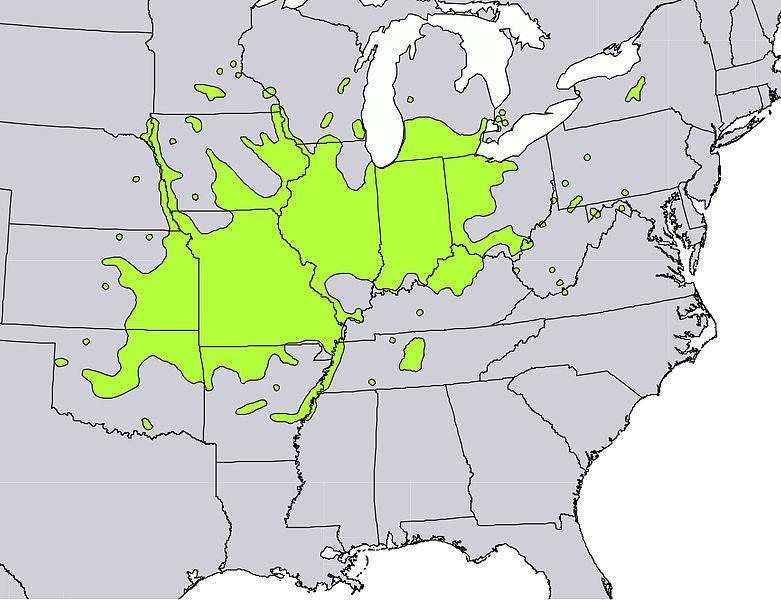Kentucky Coffeetree : Range and Distribution
The tree typically grows within a limited area of the Midwest and South; it is most numerous in Kentucky. There are also small populations in Pennsylvania and Upstate New York, but there are so few extant specimens that it is officially classified “rare” by the US Government and is routinely monitored to determine whether the species is threatened.
The seed pods themselves are too tough for most modern mammals, and they are too heavy for wind or water dispersal. Scientific evidence suggests that the pods were eaten by prehistoric mammoths and giant ground sloths, and the seeds passed unharmed through their gullets and were dispersed in their droppings. In modern times, the pods go uneaten, falling to the ground and rotting in the shade of the parent tree. The tree is rarely healthy outside a swampy, damp environment in which this process can occur. For this reason, the tree is considered a rare relic of an otherwise vanished natural past.


